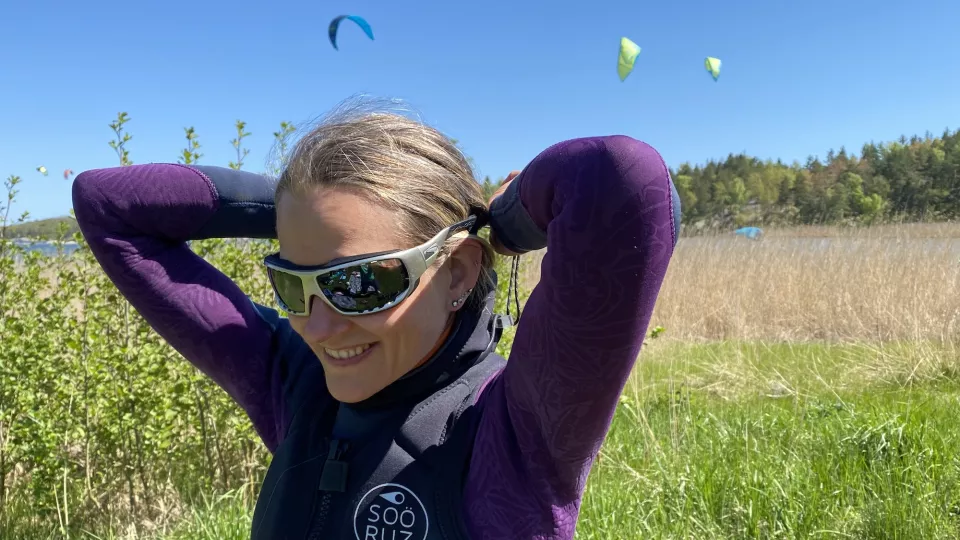What is the research focus of your lab?
My group is interested in a specific type of neural stem cell known as neuroepithelial stem cells that form early in embryonic differentiation. These cells have the ability to either self-renew, proliferate, or differentiate into neurons or glia, the supportive cells of the brain. Their function is of particular importance, as defects in neuroepithelial stem cells have been linked to the development of several neurodevelopmental and neuropsychological disorders.
As it is difficult to get access to human samples, we reprogram skin cells from healthy individuals and patients into induced pluripotent stem (iPS) cells. We then differentiate these into neuroepithelial stem cells to create cellular models in 2D and 3D (organoids) that mimic human development. Using this approach we aim to understand what controls how these cells behave and gain important insights into how these decisions may be hampered in disease.
Another focus of the lab is developing strategies for the use of iPS cell derived cell types for clinical use. A few years ago I was part of an initiative funded by Vinnova, in which we derived one of the few clinical complaint GMP iPS cell lines that is now stored in a master bank. My lab is currently generating protocols to create a supply of neurons - with plastic and immature features – that can be used in cell replacement therapies for the treatment of various brain diseases.
This translational approach is something that I plan to continue with whilst in Lund, and it will be great to have a united effort with collaborators here at Lund University and with Lund University Hospital.
Can you tell us about your path here?
I’ve always been fascinated with science, and as a child I would carry out ‘experiments’ with water in the kitchen. This interest only grew as I did, so perhaps it’s not surprising that I decided to study for a degree in Molecular Biology at Umeå University.
After my undergraduate studies, I participated in the Research School in Umeå. During this time I had the chance to participate in lab rotations and gain some valuable research experience. This really helped me decide that I wanted to continue to a PhD, for which I moved to the Karolinska Institute in Stockholm to join Prof. Jonas Frisens’ lab, studying adult neurogenesis.
My PhD had its fair share of ups and downs – which is pretty normal – and after I defended my thesis I moved to Cambridge University for a postdoctoral position to the lab of Prof. Austin Smith. The main research interest of the Smith lab is pluripotency, however at that time Austin also had a smaller group or researchers focused on neural stem cells. I became the most senior member of that group quite quickly, so at an early point in my career I already had my own little research team.
After three and a half years in Cambridge I moved back to the Karolinska Institute, where I had the opportunity to start up my own research group in parallel with establishing an iPS core facility. During this time I also had the opportunity to take a sabbatical in the lab of Prof. Fred “Rusty” Gage at the Salk Institute, La Jolla, California. This was a great experience and really opened my eyes as to how you run a big lab and how to develop and drive projects.
Now I’m excited to join Lund University and I will be putting effort into building my group here and developing our groups basic research, as well as translating our findings to the clinic. In addition to this, I will be taking over as the new Director of the ES/iPS cell core facility at Lund Stem Cell Center.
What motivates you as a researcher?
I love the fact that we work in an amazing system in which you have the freedom to follow your visions through your research. It’s also fantastic that our discoveries have the potential to make a difference in human health, especially when developing stem cell therapies to cure currently incurable diseases. Finally, it’s very rewarding supporting my group members and helping them to grow as researchers and achieve their goals!
What do you like to do when not in the lab?
I have three daughters, born 2002, 2006 and 2011, so I spend a lot of time with them. As a family we love to go skiing, snowboarding and orienteering (running around in the forest and finding flags and checkpoints). I also really enjoy kitesurfing, so I’m excited for the summers down here in windy Skåne!


